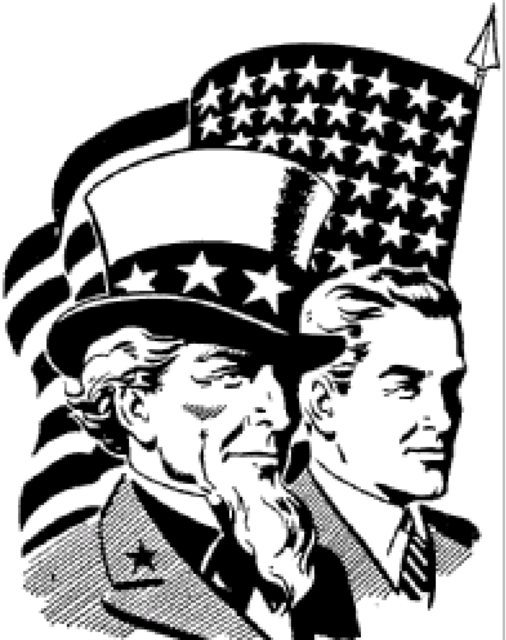Revenge of the bureaucrats
Federal workers vs. Trump's vow to
freeze hiring and shrink the government
Politico By Nancy Cook and Andrew Restuccia 01/23/17
President Donald Trump is setting himself up for a messy clash with the country’s 2.1 million federal employees as his administration quietly preps plans to cut the size of the government workforce.
As one of his first acts, Trump is expected to sign an executive order this week freezing most federal hiring. His team is also fine-tuning plans to shrink several agencies focused on domestic policy, according to sources close to the transition.
Now, though, the president is about to find out how much power these maligned workers have to slow or even short-circuit his agenda.
Disgruntled employees can leak information to Capitol Hill and the press, and prod inspectors general to probe political appointees. They can also use the tools of bureaucracy to slow or sandbag policy proposals — moves that can overtly, or passive aggressively, unravel a White House’s best-laid plans.
“The government is a place where it is easier to keep something from getting done, than it is to actually do something,” said Robert Shea, an official in George W. Bush’s Office of Management and Budget. “All of the work that the new administration wants to get accomplished will depend on the speed and productivity of the federal workforce.”
The Trump personnel team led by Kay Coles James and Linda Springer, both also Bush alumni, has broad goals to reduce the size of domestic agencies while slightly bolstering the defense workforce, say sources close to the transition. Aides are also mulling a process, known as “reduction in force,” that would allow the new administration to skirt the civil service’s complicated rules for hiring and firing.
The easiest way to make such reductions might be through budget cuts to each agency, which would be outlined in Trump’s first budget proposal this spring, say former senior government human resources officials who did not have first-hand knowledge of the administration’s plans. The Trump team did not respond to requests for comment.
The reality is it’s far harder to shrink the federal workforce than it is to slash staff at, say, the Trump Organization. Thousands of federal workers belong to powerful unions that can mobilize their representatives in Congress. And almost two thirds of them work for defense and security-related agencies, according to the nonpartisan Partnership for Public Service — areas of the government that Trump promised not to touch during the campaign.
Ostracizing the massive federal workforce comes with its own political perils. The vast majority — about 85 percent — are based outside of Washington, D.C., meaning Trump could anger workers all over the country, including in key battleground states.
Jimmy Carter and Ronald Reagan tried to reduce the size of the workforce with hiring freezes. But despite isolated victories, such as Reagan’s vanquishing of the air traffic controllers union, most of those efforts failed to produce lasting change. The first two years of Reagan’s presidency saw a reduction in federal jobs, but they actually increased over the course of his tenure.
And contrary to Republican claims, the number of federal workers actually dropped during Obama's eight years in office, according to data from the Bureau of Labor Statistics.
Unions representing federal workers are already railing against Trump's proposals — and they are counting on whistleblower laws to protect employees who raise red flags about his administration's activities.
“Clearly, they have the right to speak up and speak out,” Jeffrey David Cox, the national president of the American Federation of Government Employees, the largest federal employee union, said of federal workers. “They have First Amendment rights.”
A massive reduction in the federal workforce could also result in a greater reliance on contractors, which could cost taxpayers even more money, Cox said. “If President Trump is serious about draining the swamp, he’d certainly take a stance against big contractors,” he added.
Cox, like others interviewed for this story, noted that most career federal employees are used to the political changing of the guard and they take their role as nonpartisan government overseers seriously.
“Federal employees get up and go to work and they do what they’re told to do,” he said. “They don’t drive the train. They stoke the furnace. ...They keep the train on the track.”
Another federal employee put it this way: “You give your absolute best opinion and then, absent unethical or illegal behavior, if it’s decided there’s a better way, then OK, you work with that too.”
Still, many federal workers admit they are freaked out — demoralized by their portrayal as part of the DC “swamp” and anxious about being asked to dismantle rules and regulations they’ve labored over for years.
“What I am hearing from federal employees is a degree of apprehension that I have not heard since the Reagan transition,” said Jeffrey Neal, who ran human resources for Homeland Security’s 190,000 employees in the last job of his 33-year-long government career.
"For some of them, it’s PTSD — 'Oh my God, is that what we’re going back to?'" said one former Obama administration official. “They’re scared.”
Federal workers are also concerned that Trump may get support for gutting civil service protections from the Republican-controlled Congress. House Oversight and Government Reform Committee Chairman Jason Chaffetz (R-Utah) is pushing a legislative package that would make it easier to fire federal workers, among other things. And House Speaker Paul Ryan (R-Wis.) has said he broadly supports overhauling civil service rules.
Earlier this month, House Republicans quietly resurrected an 1876 rule that would allow them — with the sign-off of a majority of both the House and Senate — to use spending legislation to reduce the salary of an individual government employee, a move that infuriated union members.
“They’re basically creating an environment of fear within the government,” one career federal worker told POLITICO. “In creating that culture of fear, it’s probably going to suppress some of the people from standing up to the administration.”
Faced with an uncertain future, some career civil servants are debating whether to stick around.
“If they’re close to retirement, they’ll probably just leave,” said a career EPA employee.
That employee expects those who stay to fight actions they deem ill-advised or illegal by quietly providing information of what is happening inside their agencies to advocacy groups and the media.
“It was very typical during the Reagan administration for somebody to stick something in a manila envelope and take it to the Post Office and mail something to the National Wildlife Federation,” the employee said.
But one career Justice Department employee, who came aboard during the Obama era, said that no civil service workers have left for other jobs yet. “The job market for Democrats in D.C. is really tight now,” the DOJ worker said. “I don’t know how many people in my office are staying because they don’t have anywhere to go.”
Even without an adversarial White House, the federal government would face a nearly unprecedented brain drain. Two-thirds of career employees in senior leadership positions are eligible for retirement in the next few years, and by 2018, 30 percent of all career federal employees will be eligible, according to a 2015 GAO report.
Former political appointees said career service workers offer invaluable government experience to a new administration.
"You want to know what they know,” said Lisa Brown, who served as the White House staff secretary at the beginning of the Obama administration. “You want them to come to you and say, ‘we’ve tried this before and here’s why it didn’t work.
When Obama took office, career employees walked Obama’s political appointees through key rules and procedures on everything from disaster relief to sending nominations to the Senate.
"None of us knew how that worked,” she said. We would have totally bollixed that up."
a campaign for Congress to support civil service
National Federation of Federal Employees
Chicago, IL
We Work for America
Everyday
Ostracizing the massive federal workforce comes with its own political perils. The vast majority — about 85 percent — are based outside of Washington, D.C., meaning Trump could anger workers all over the country.

